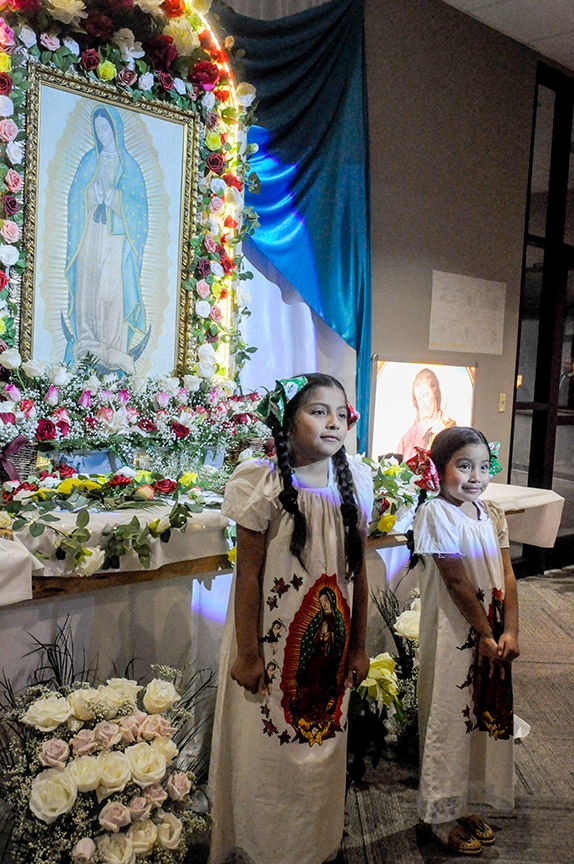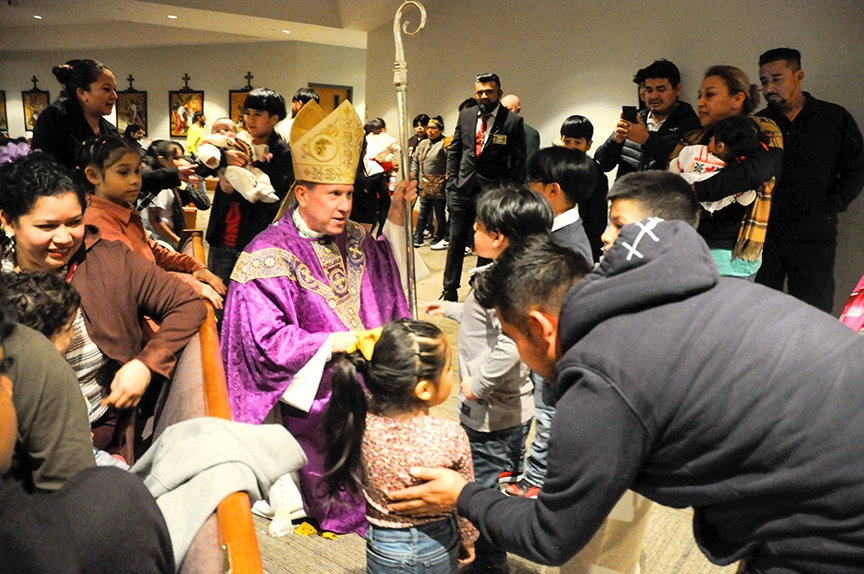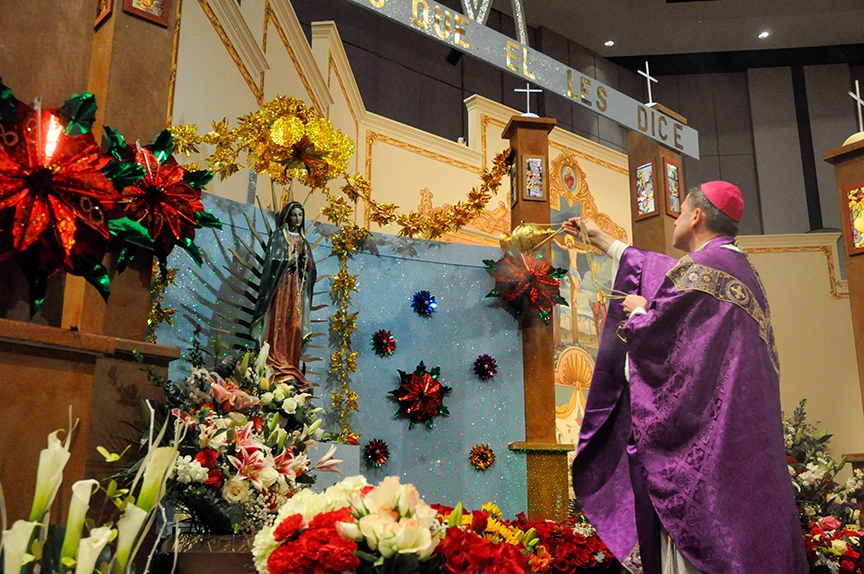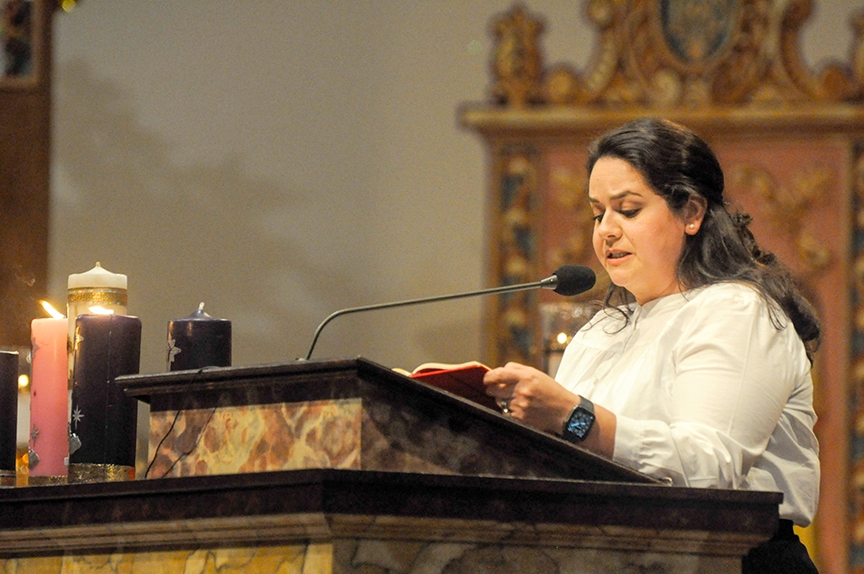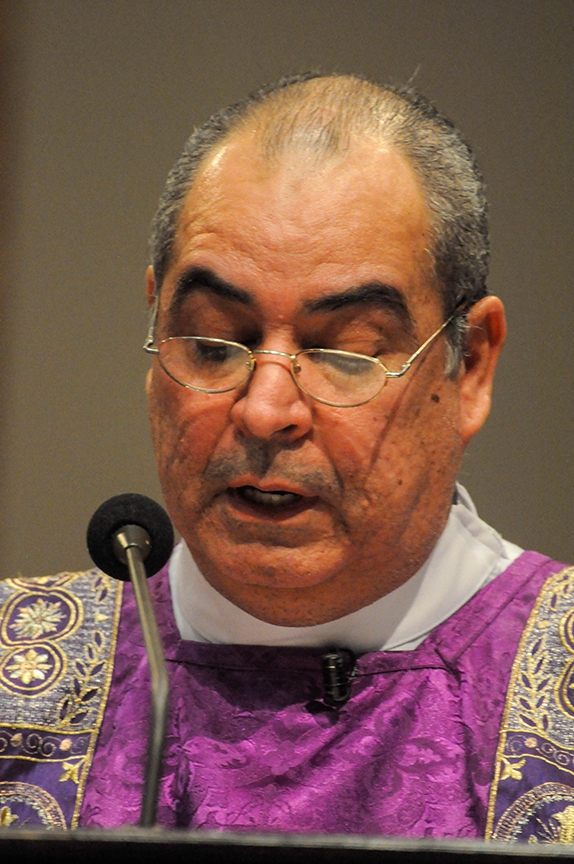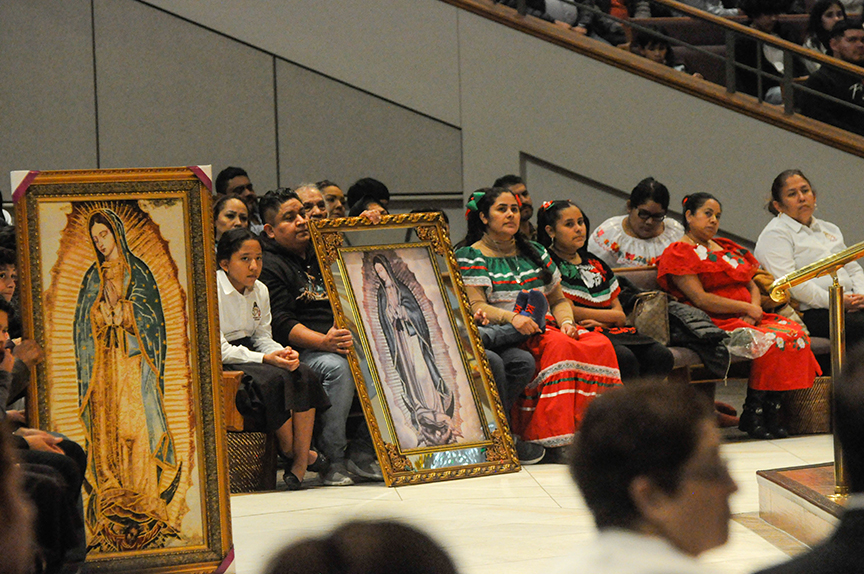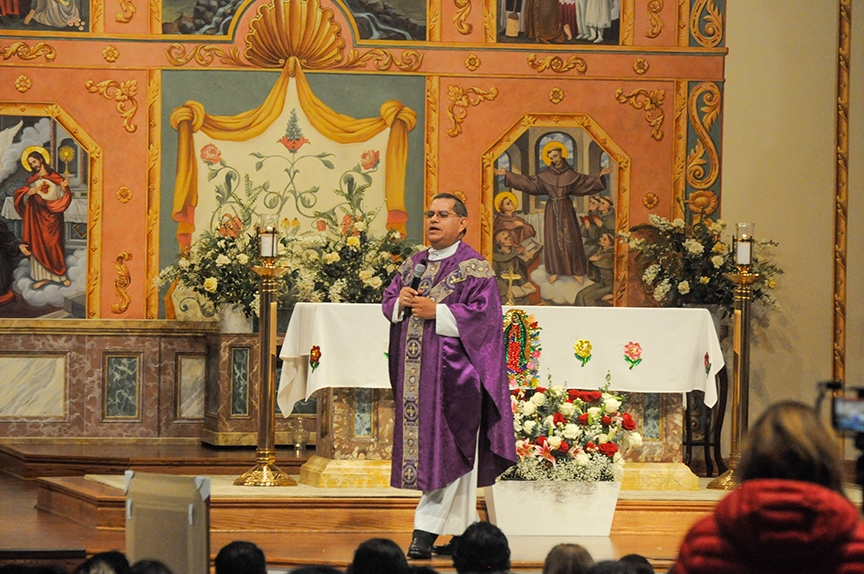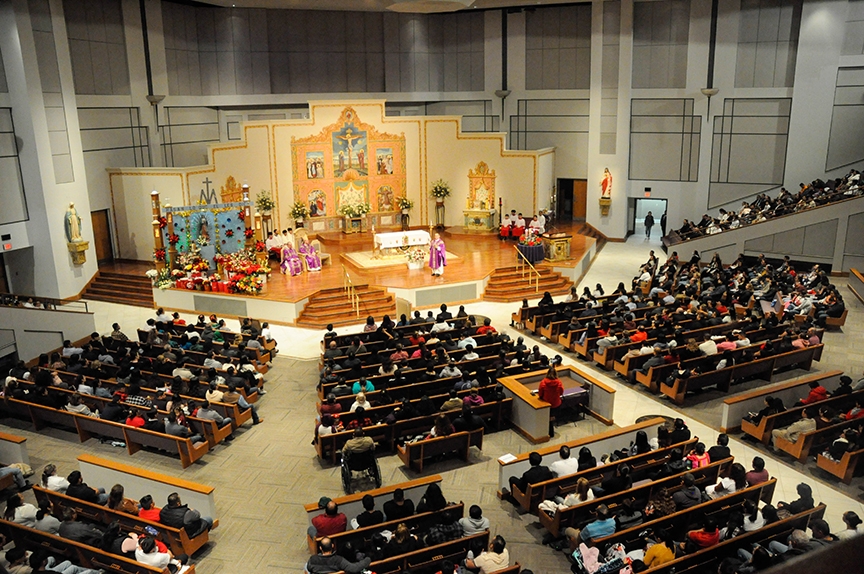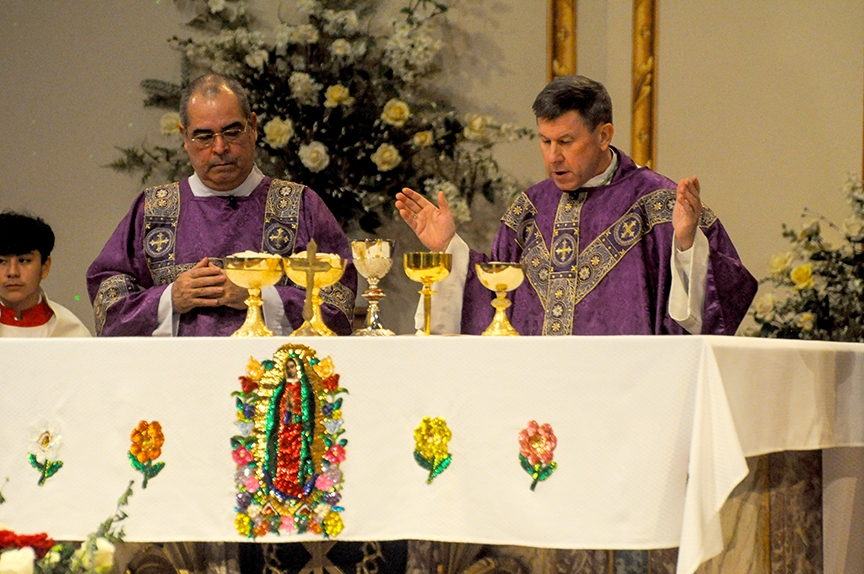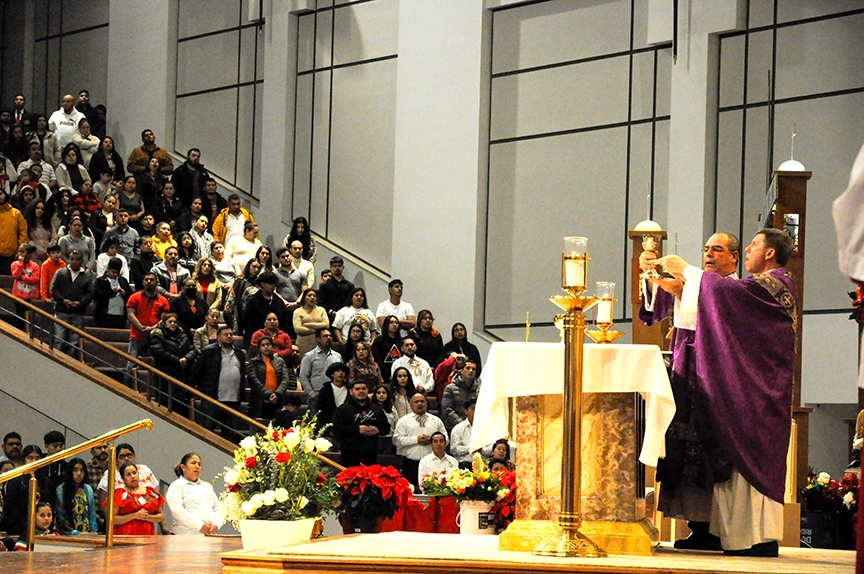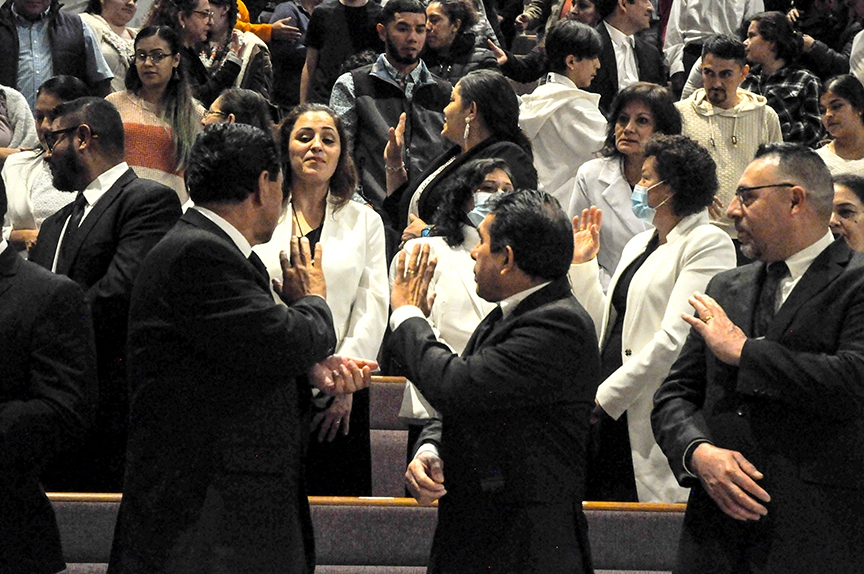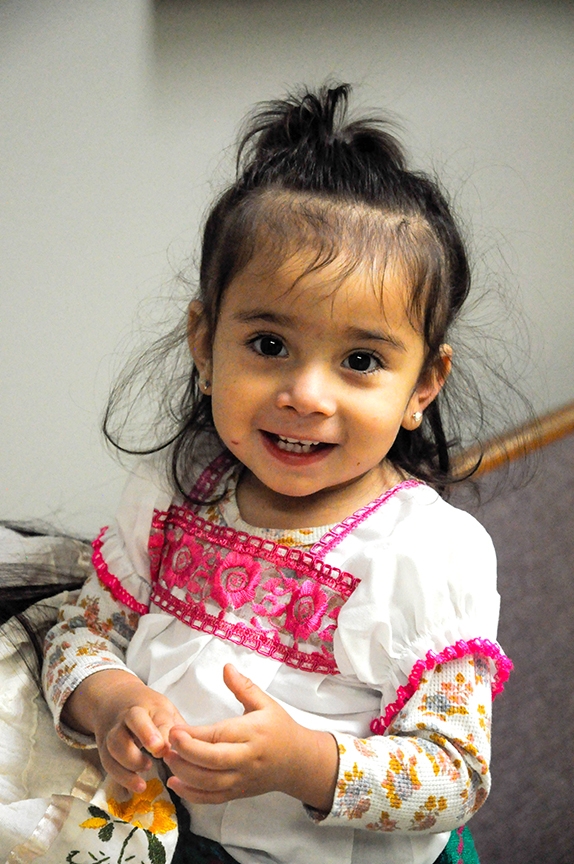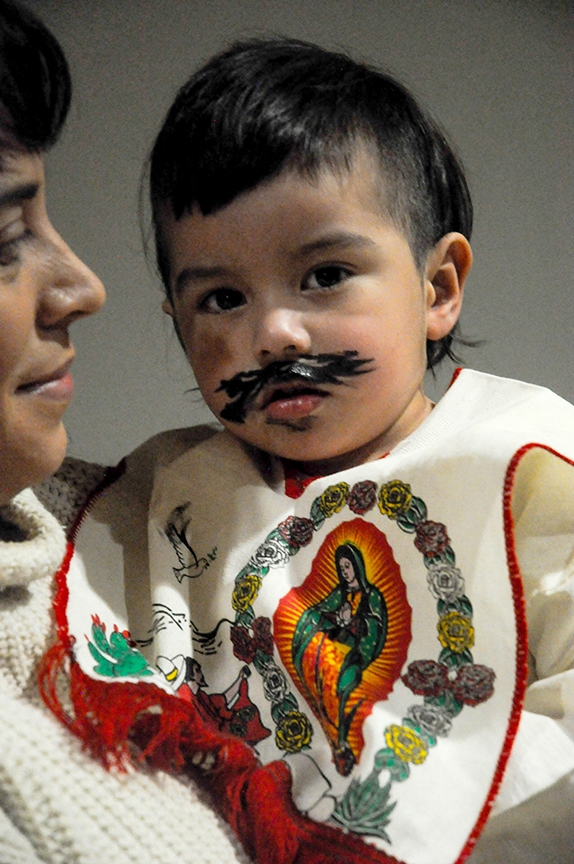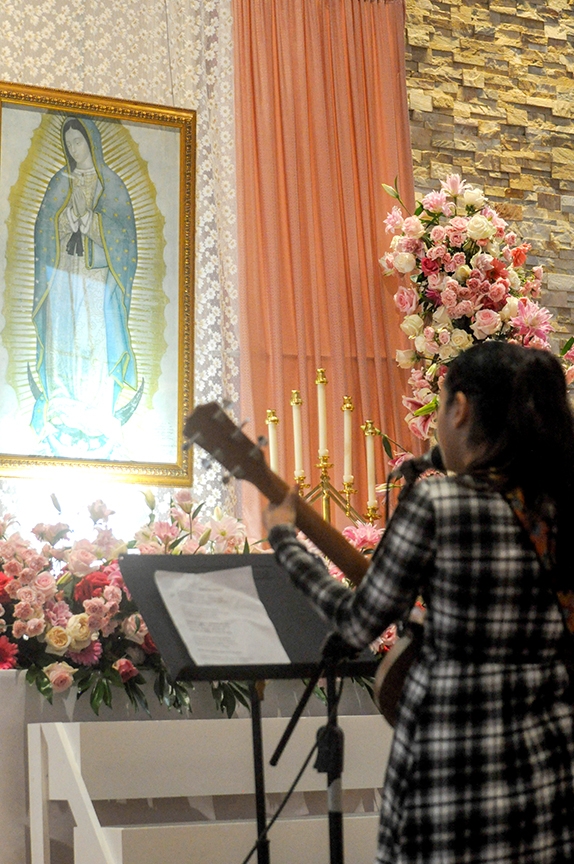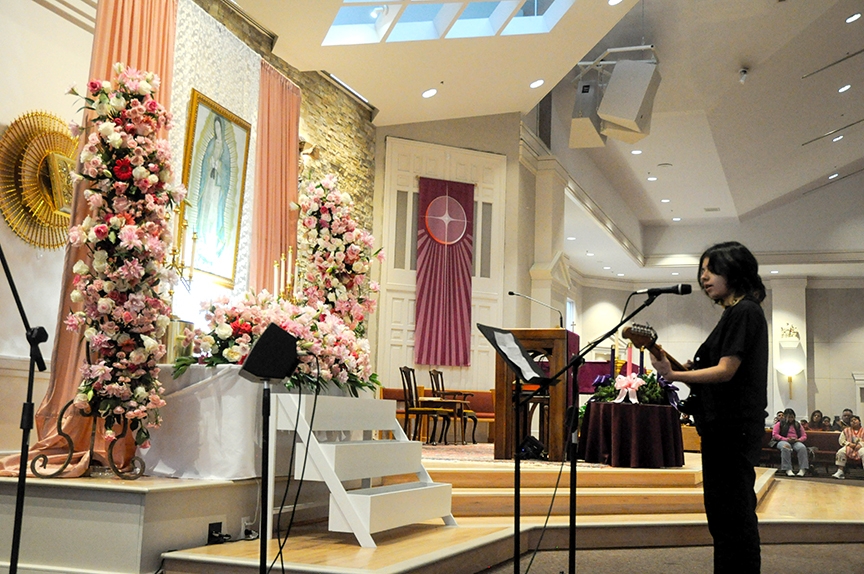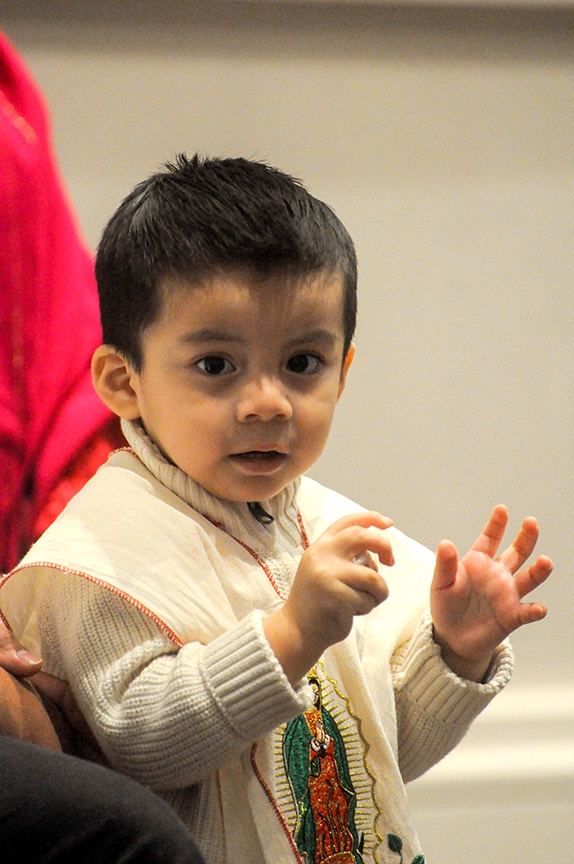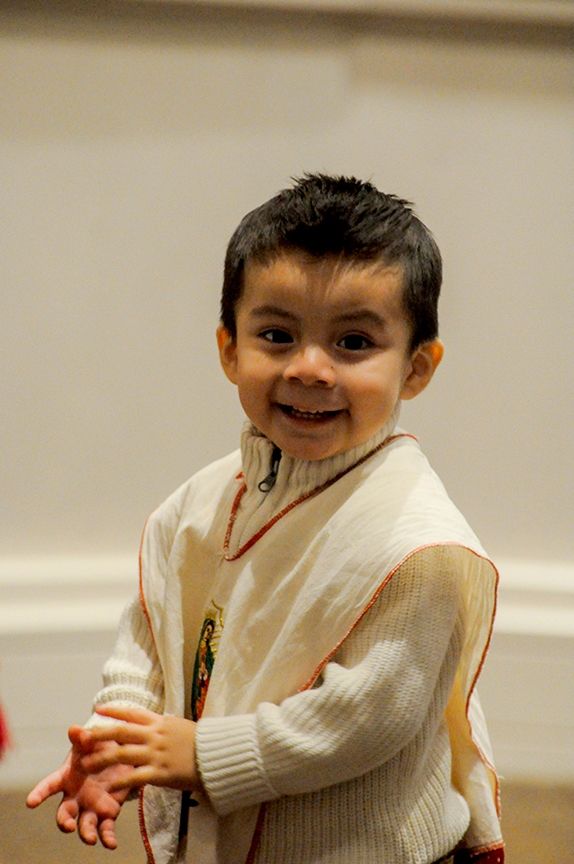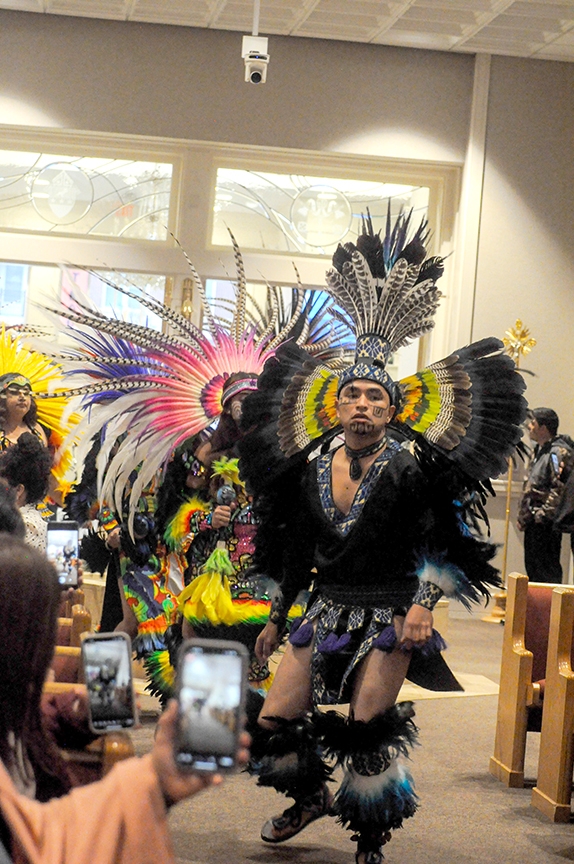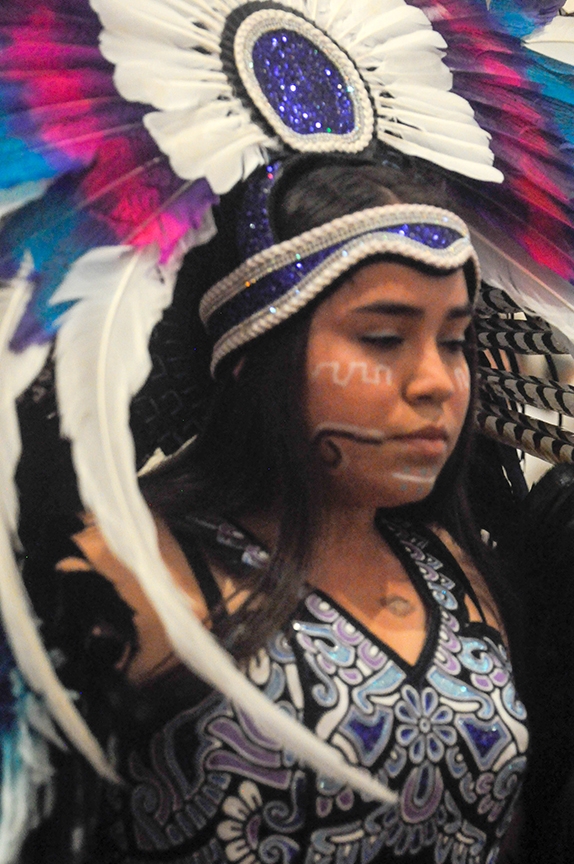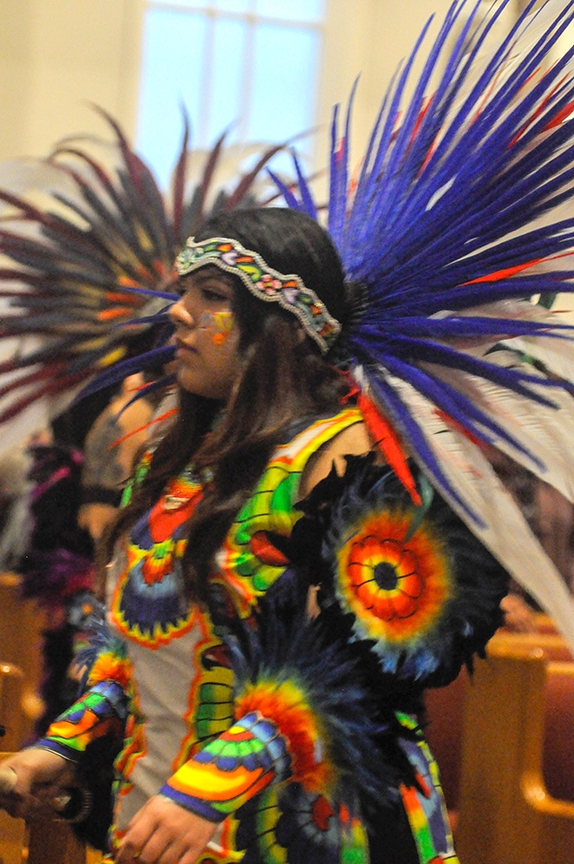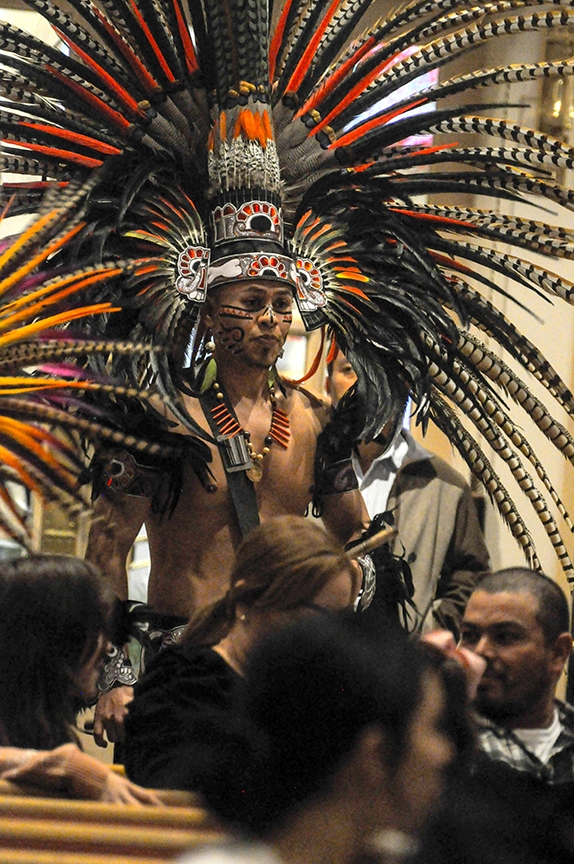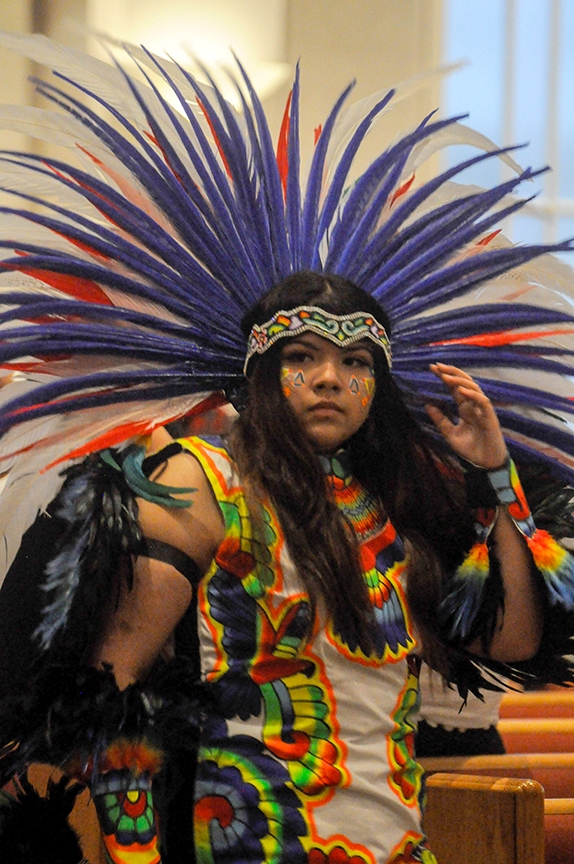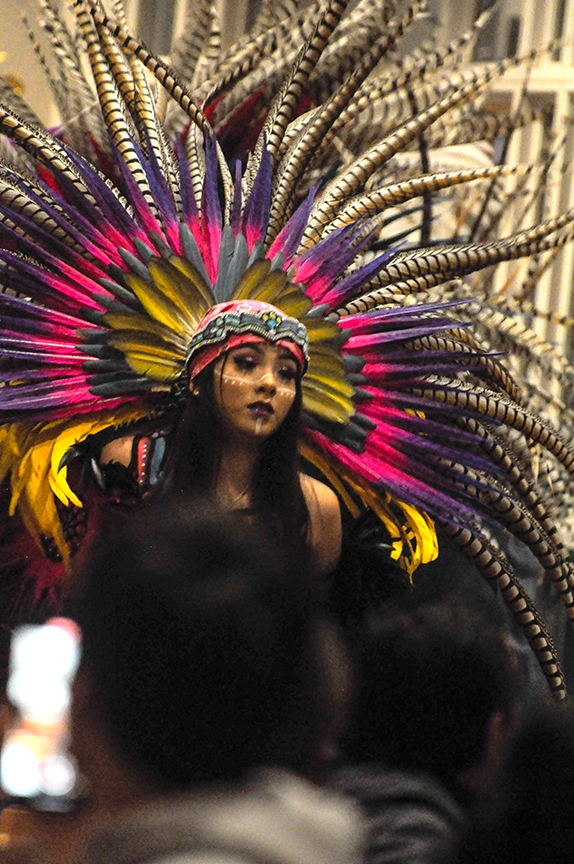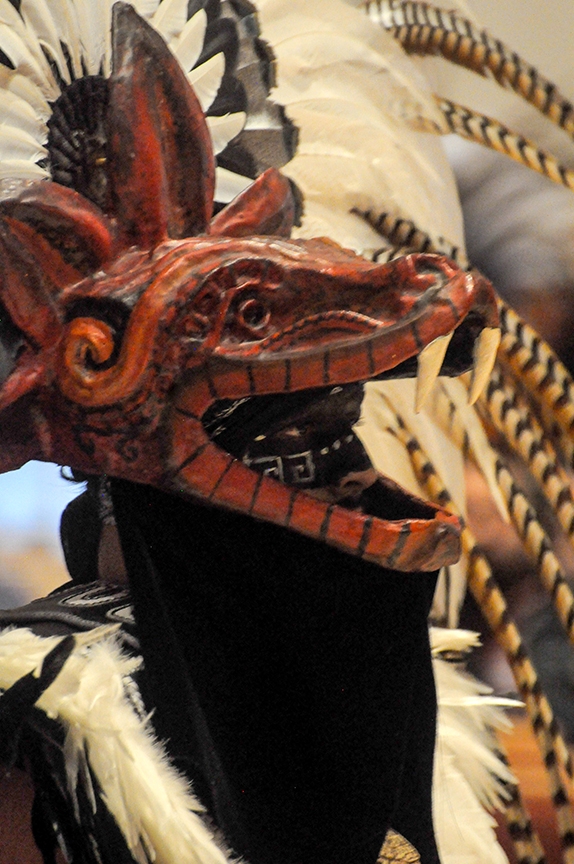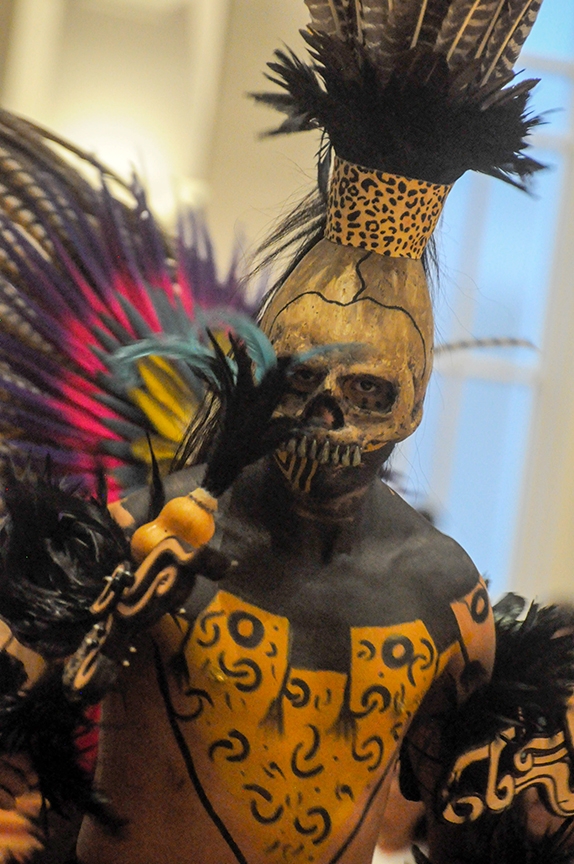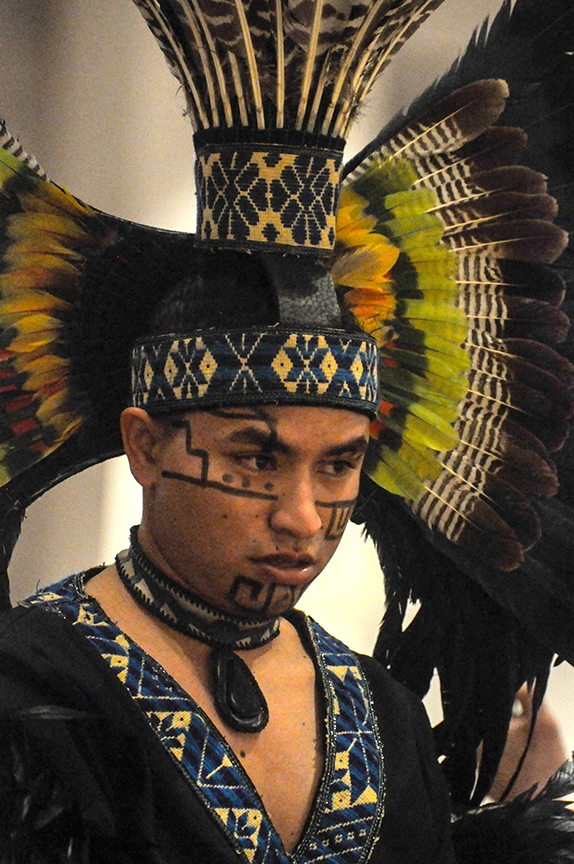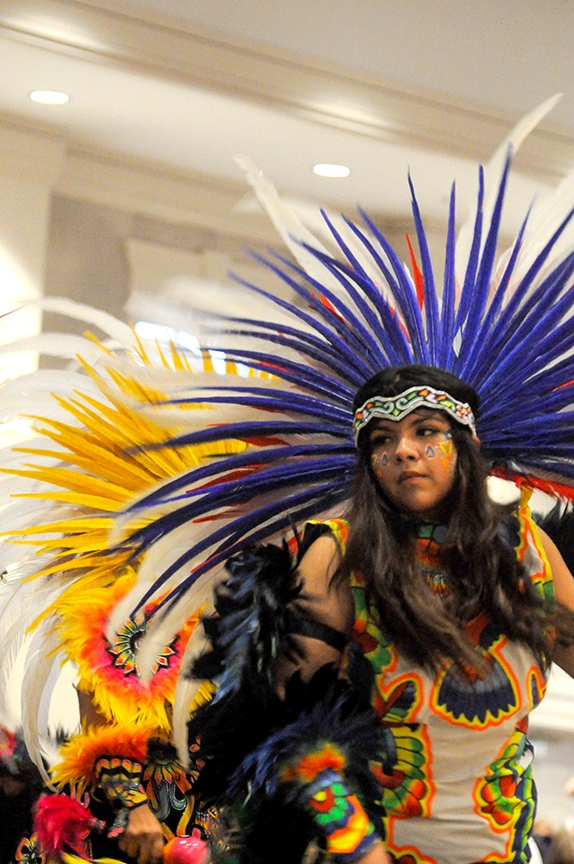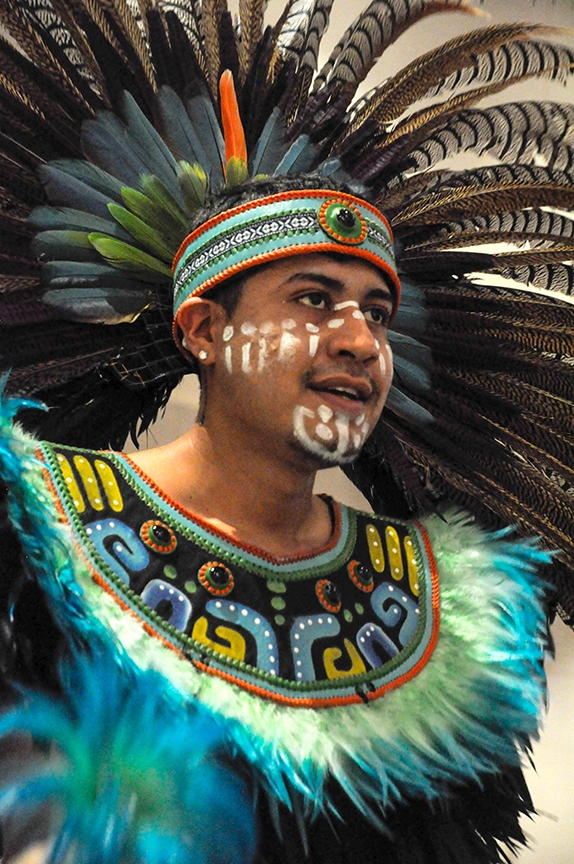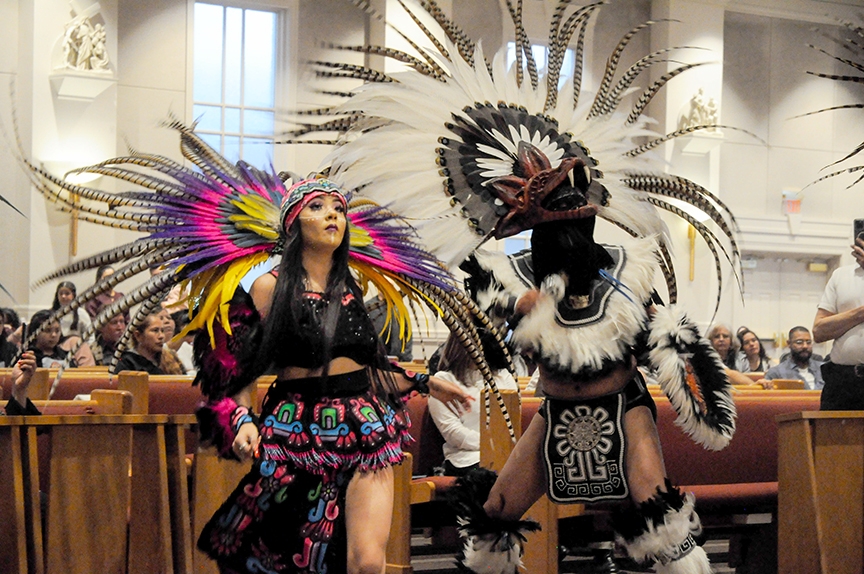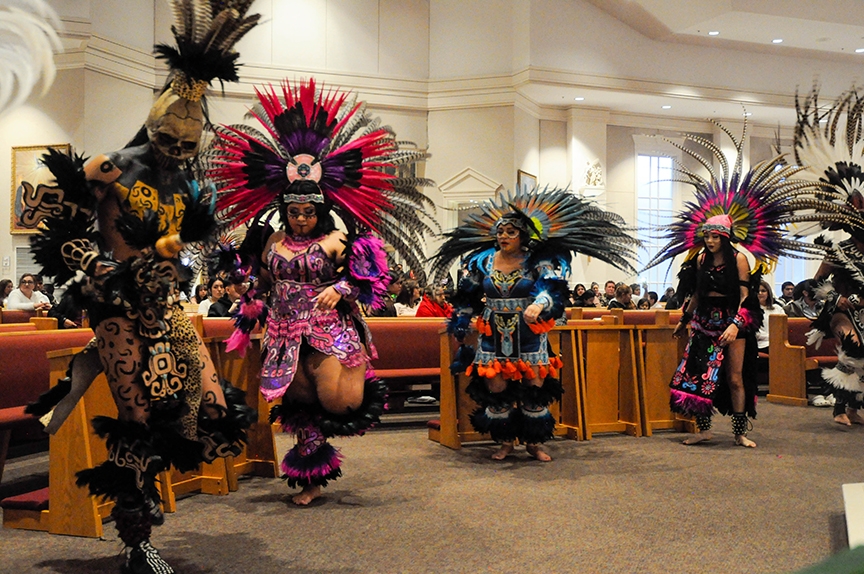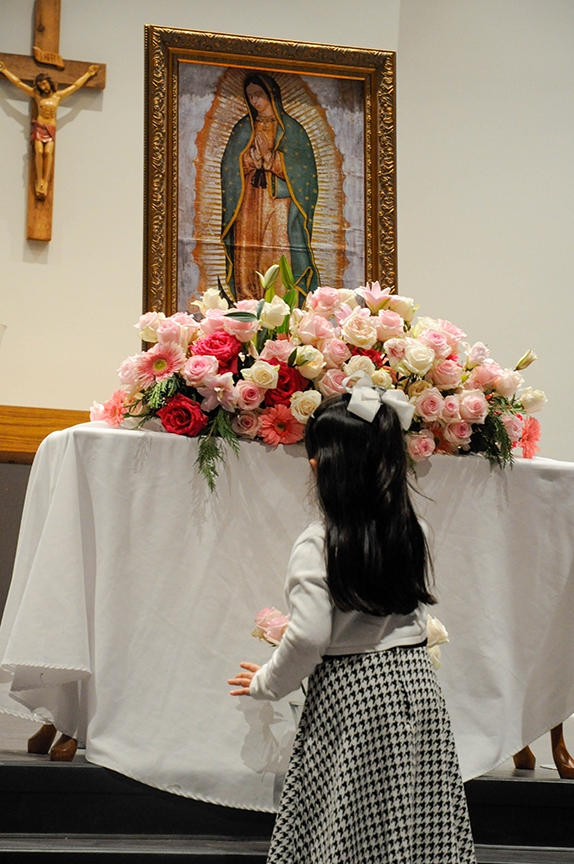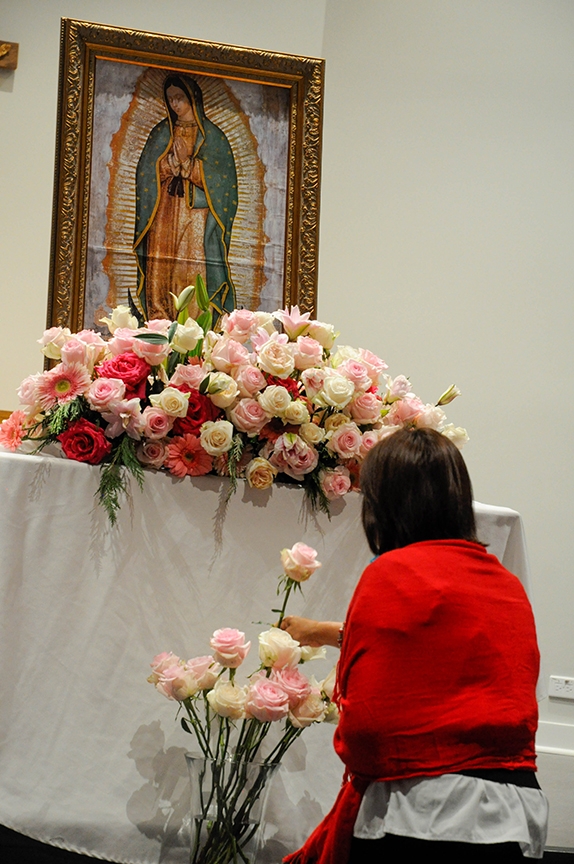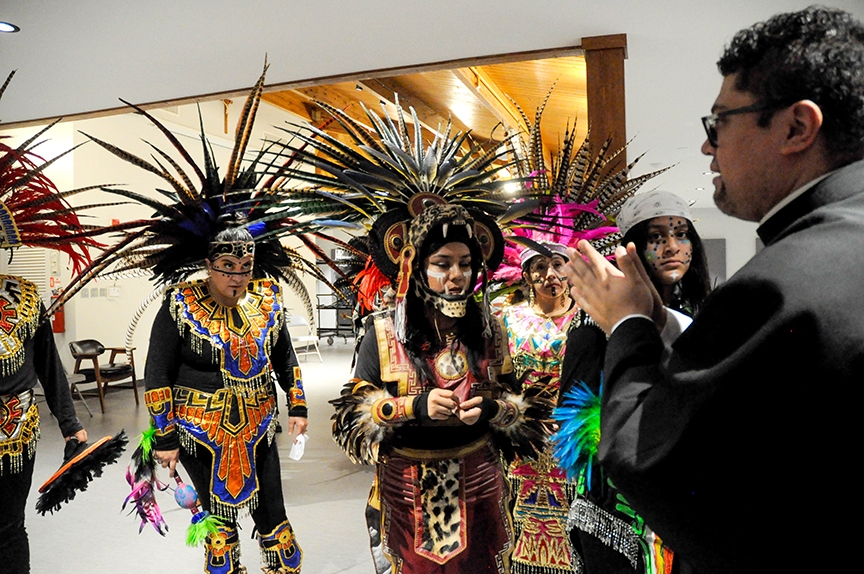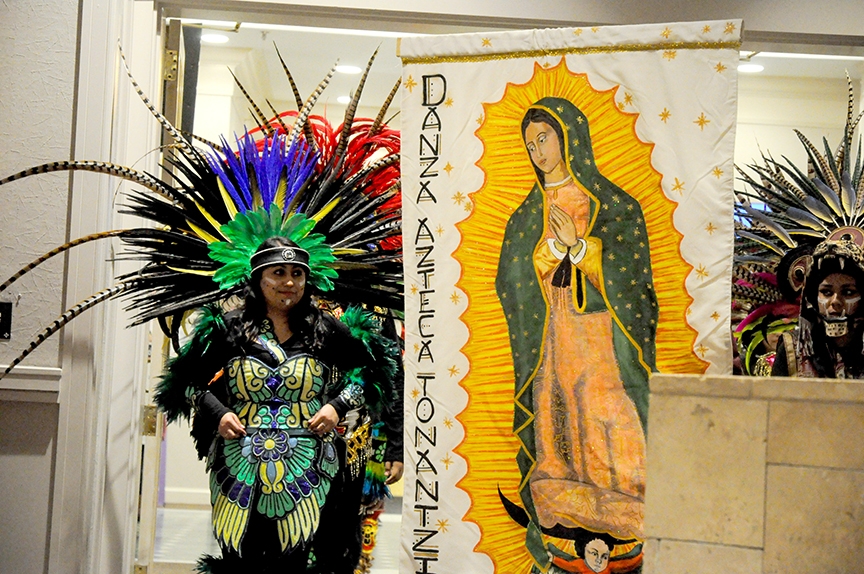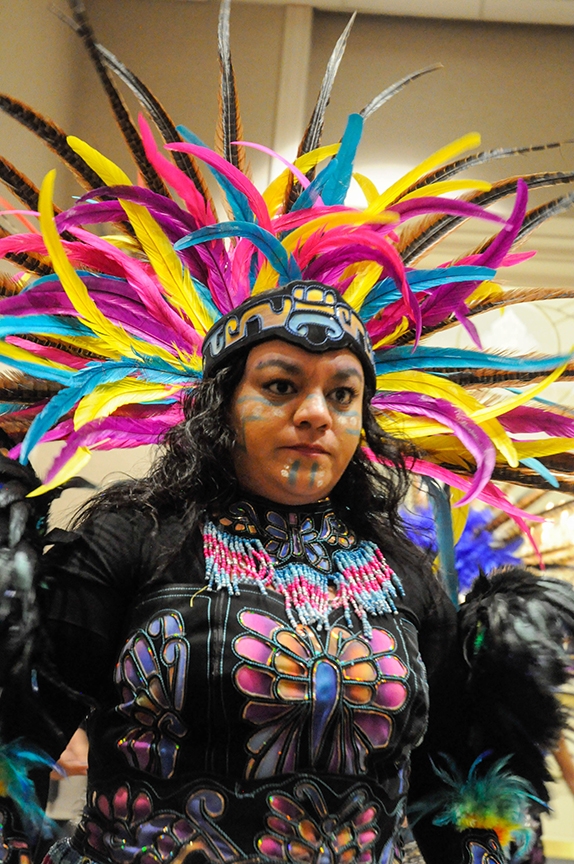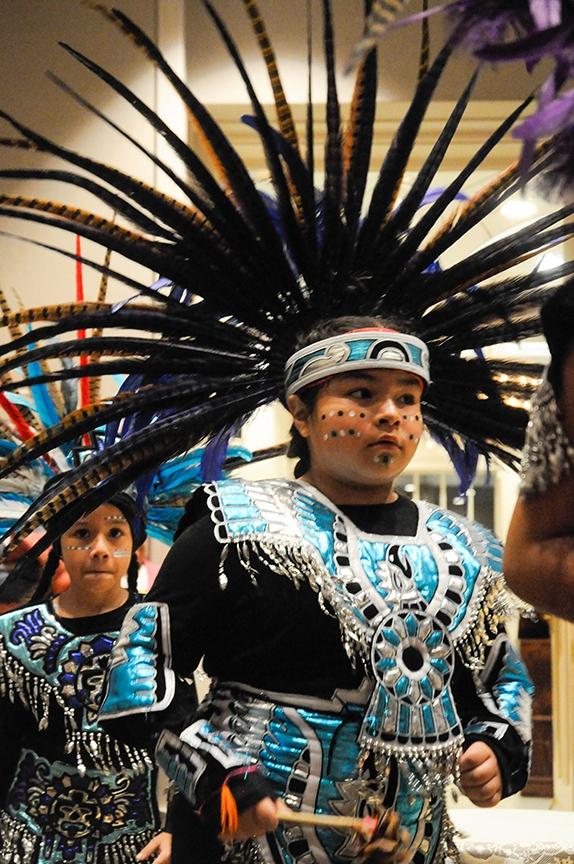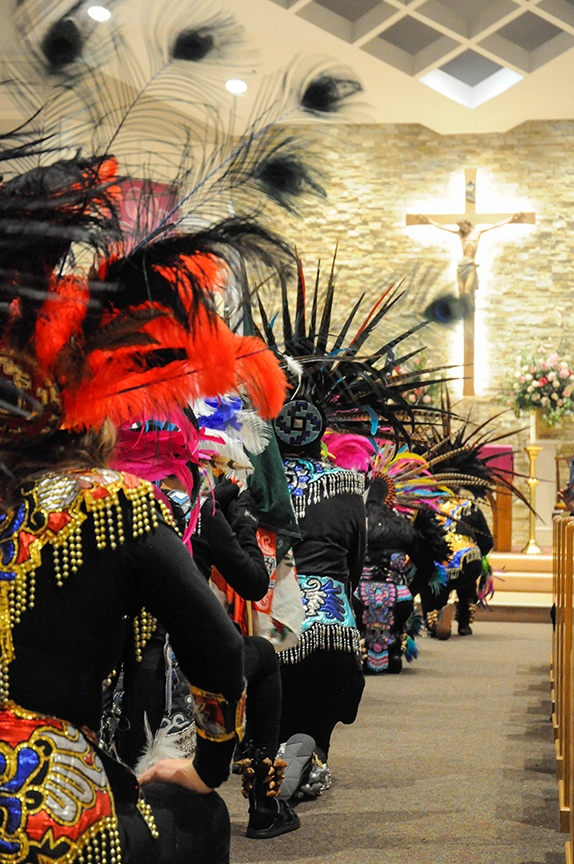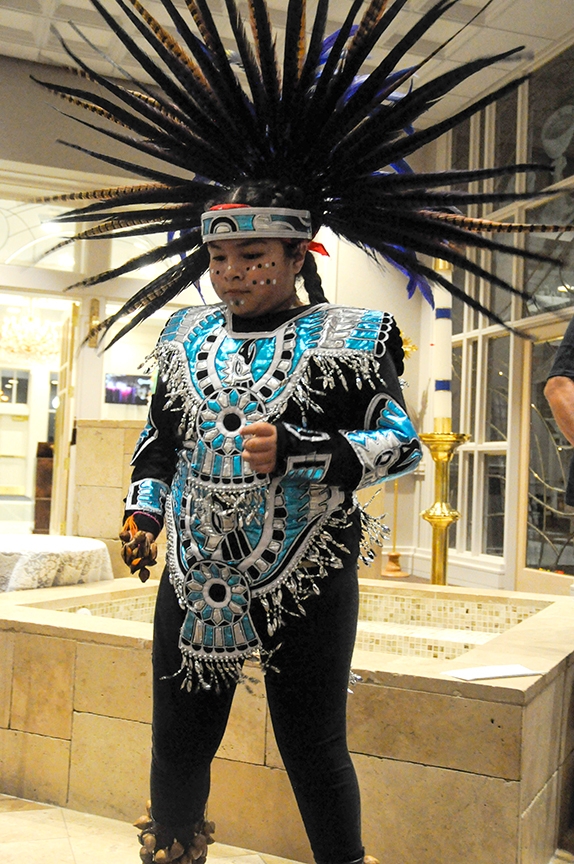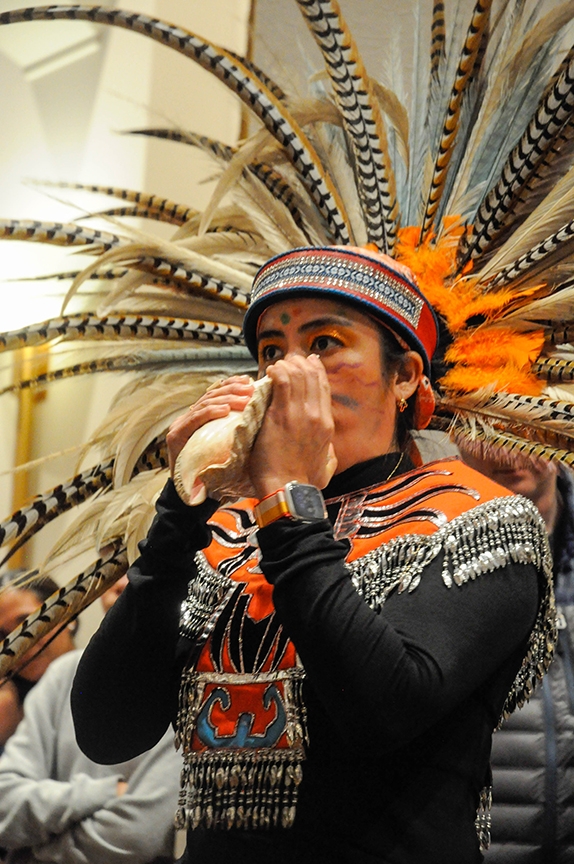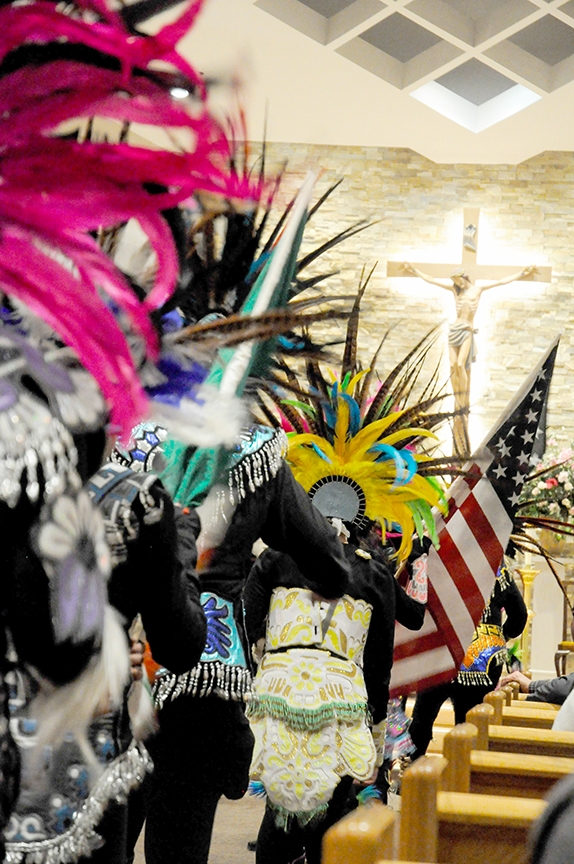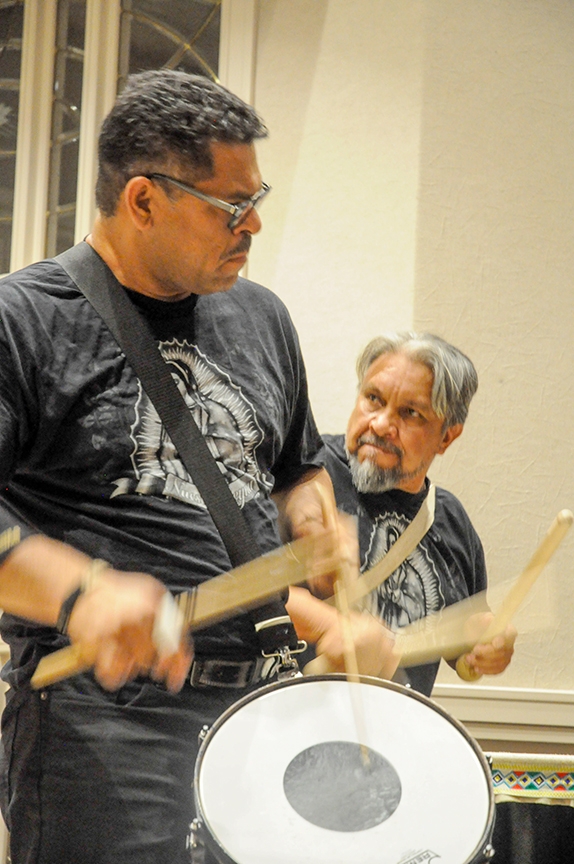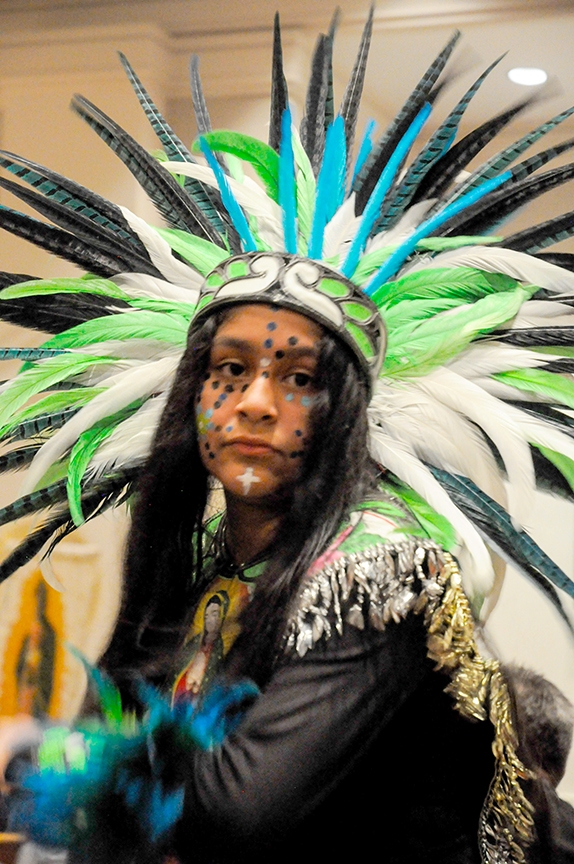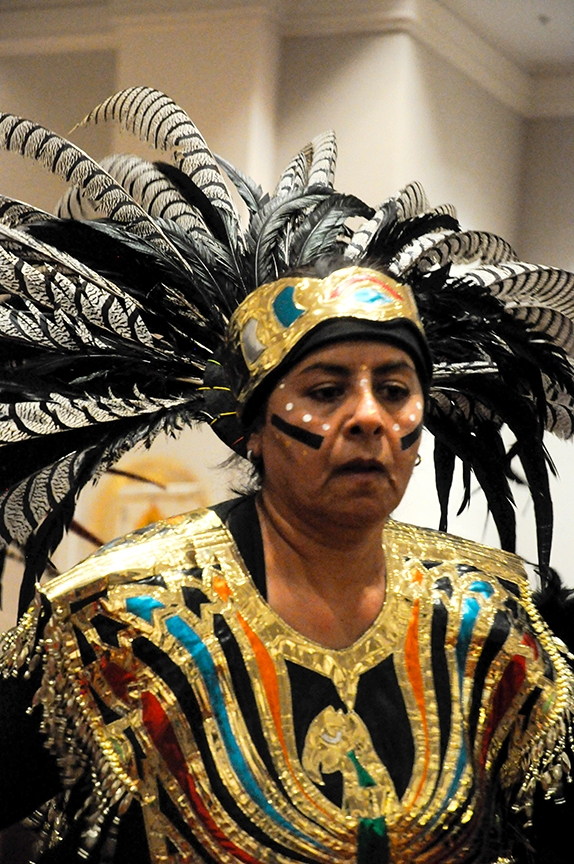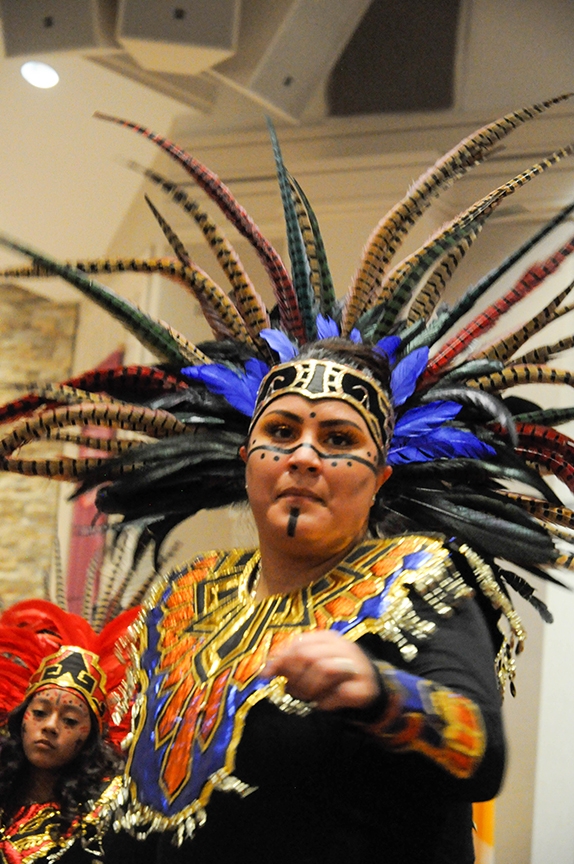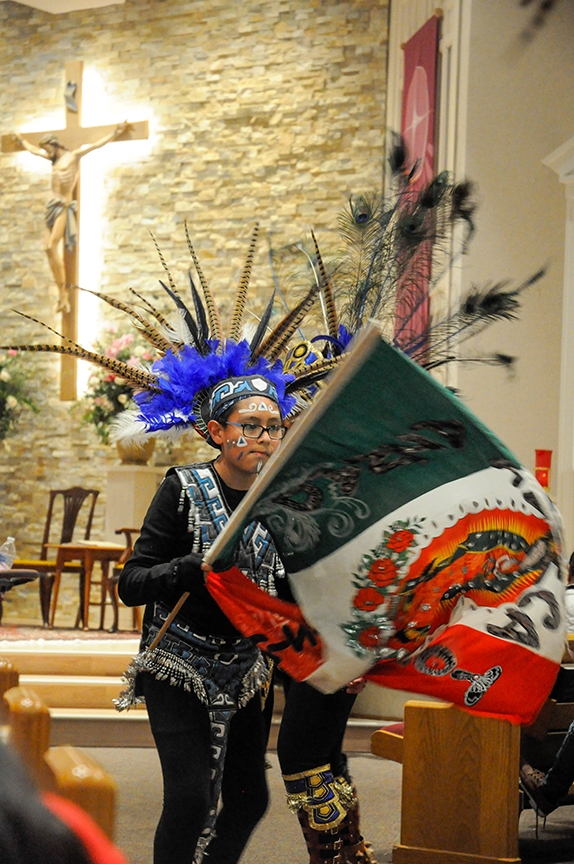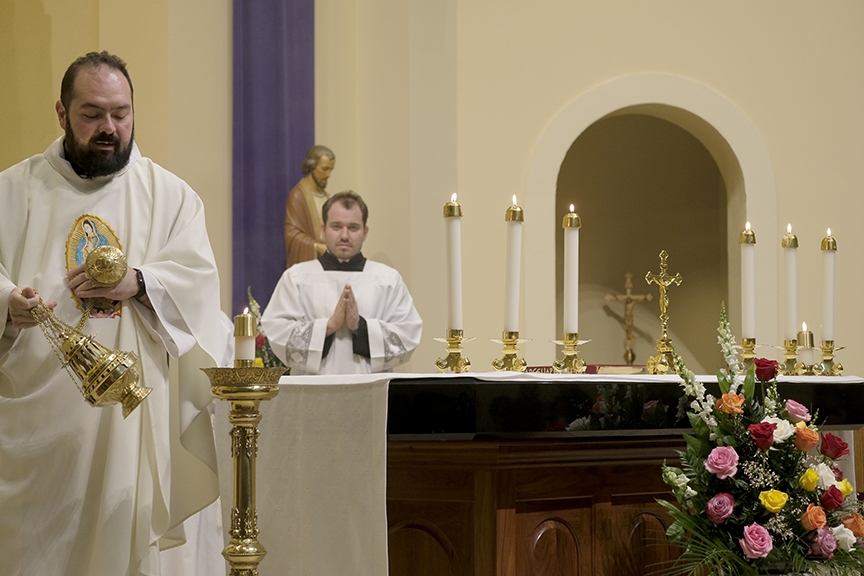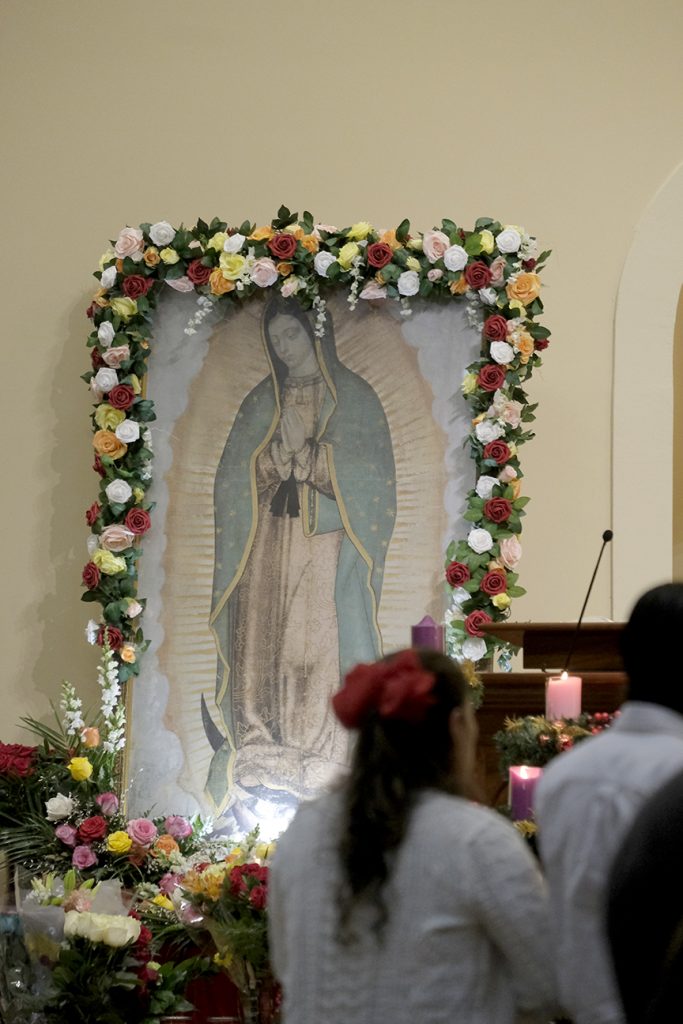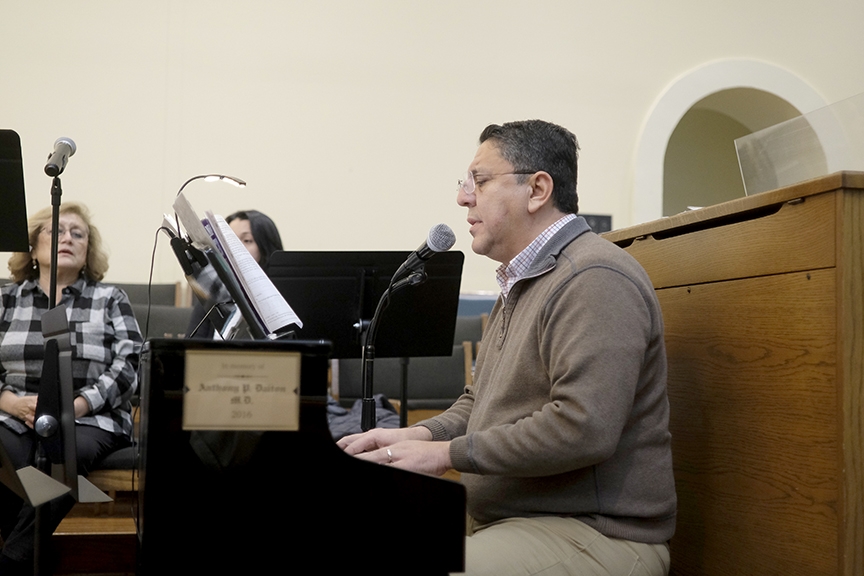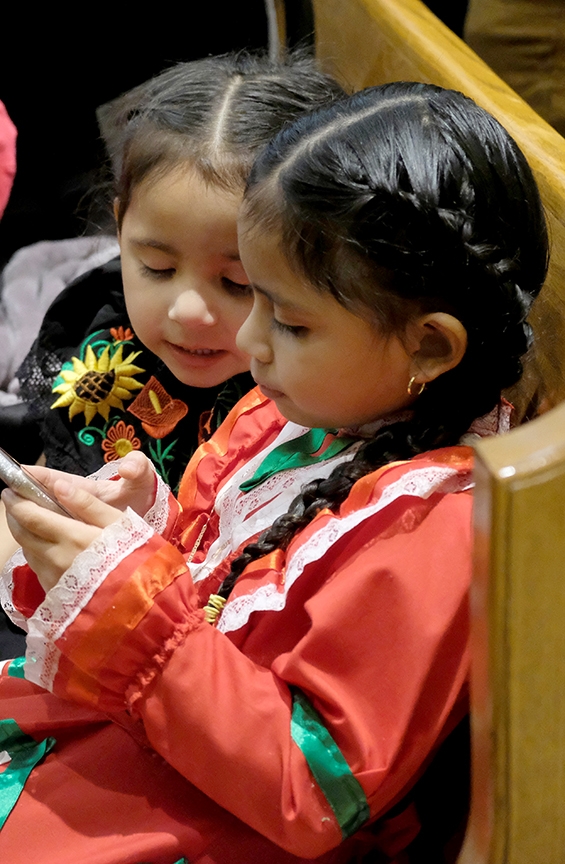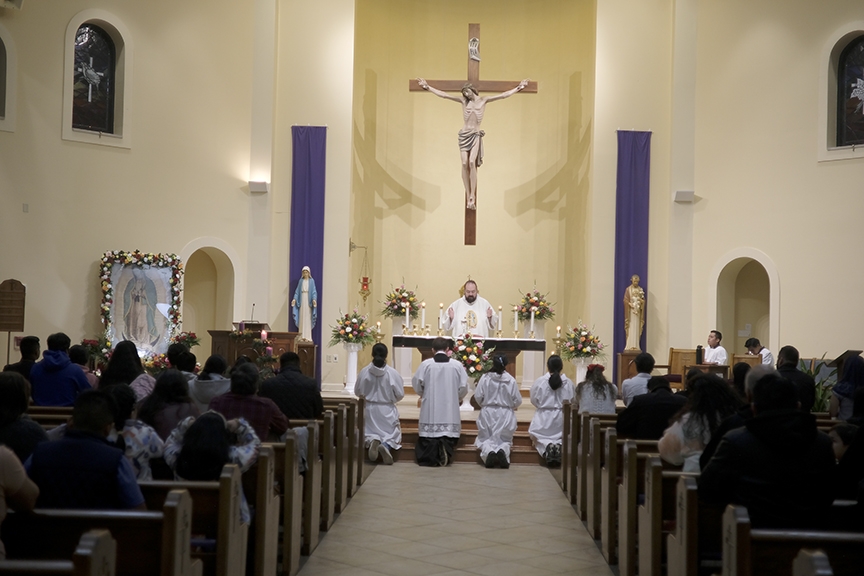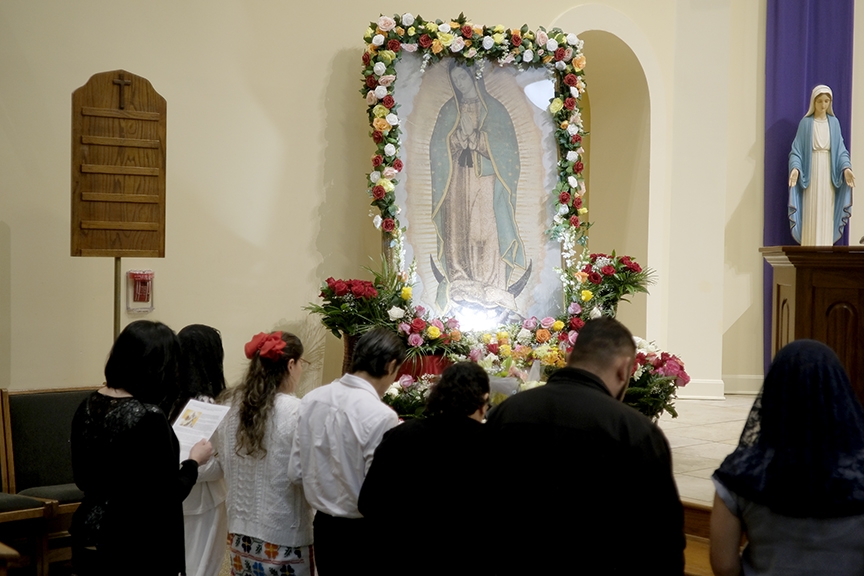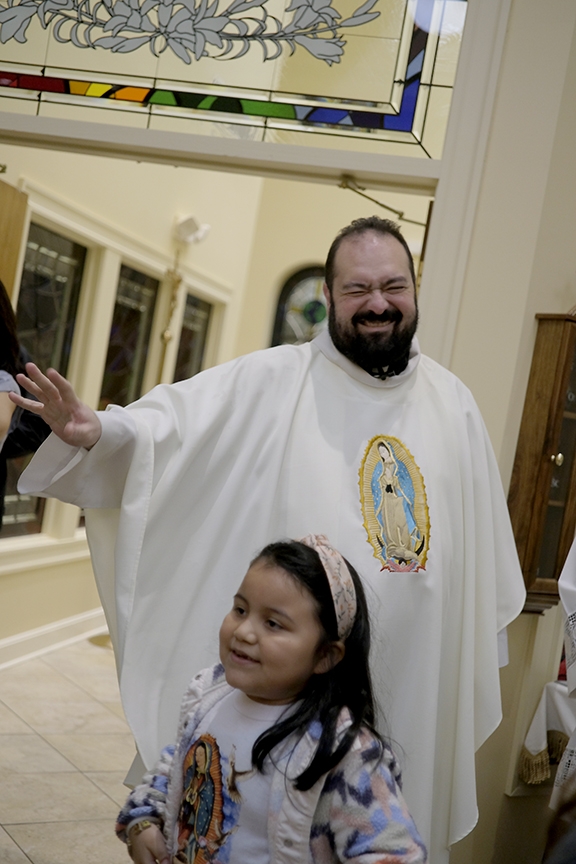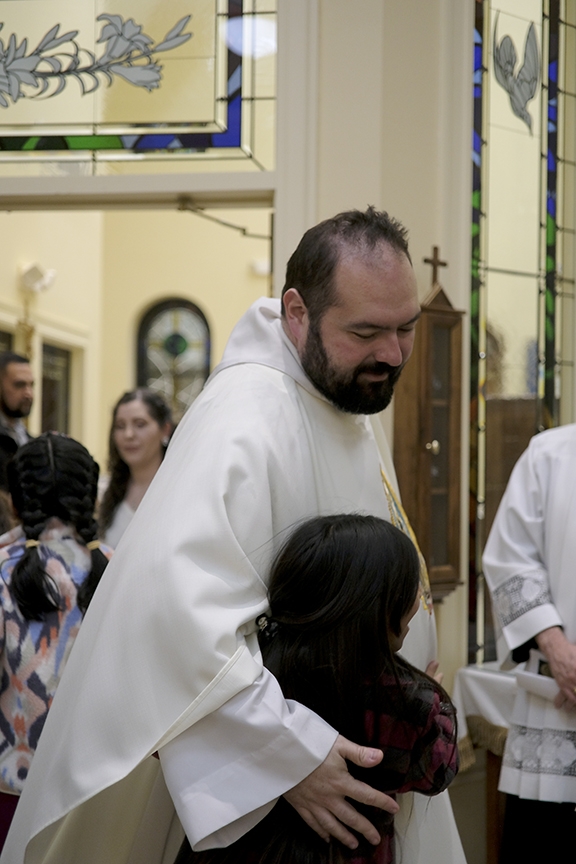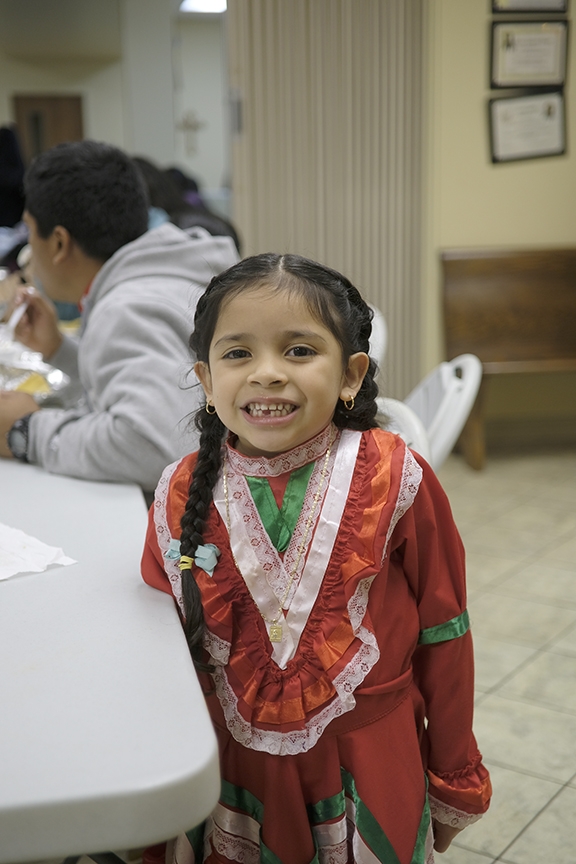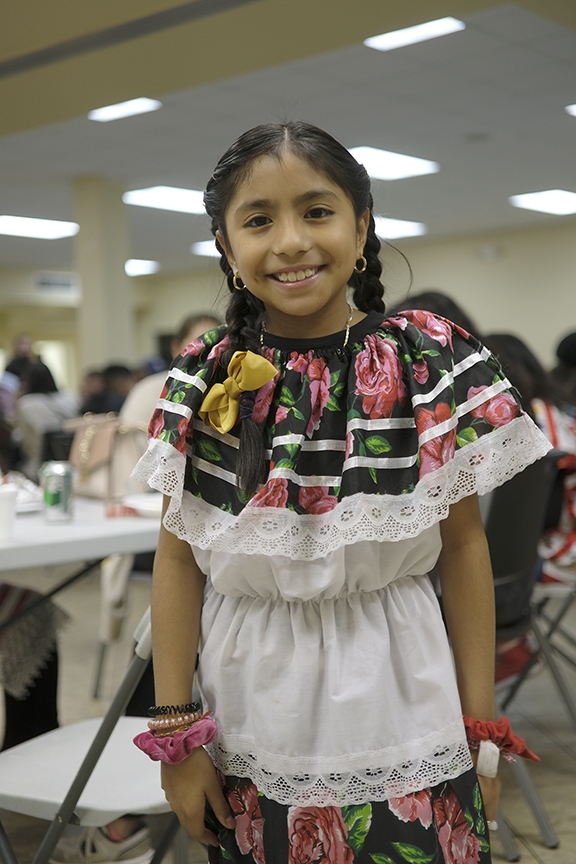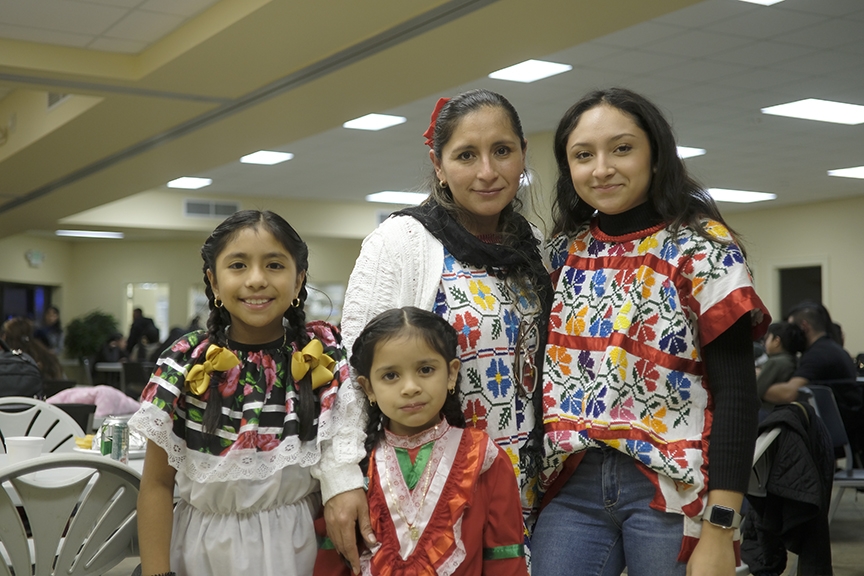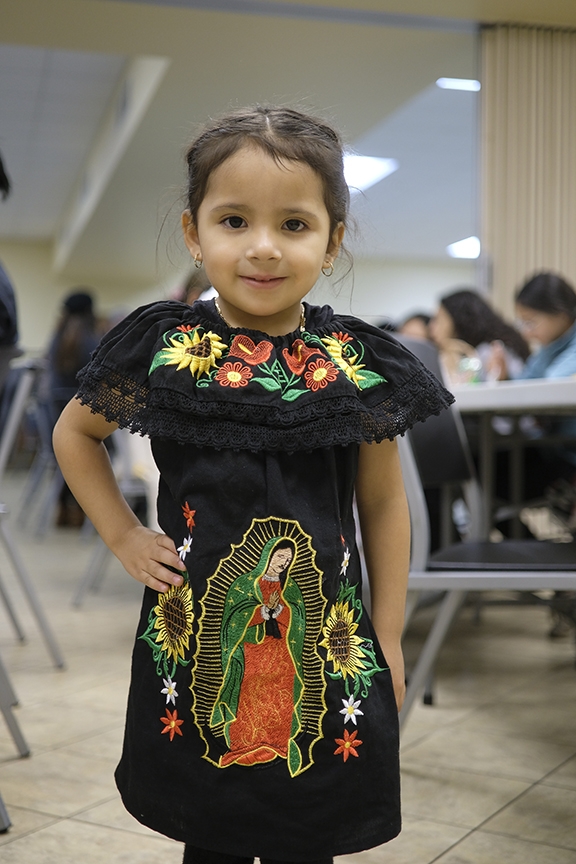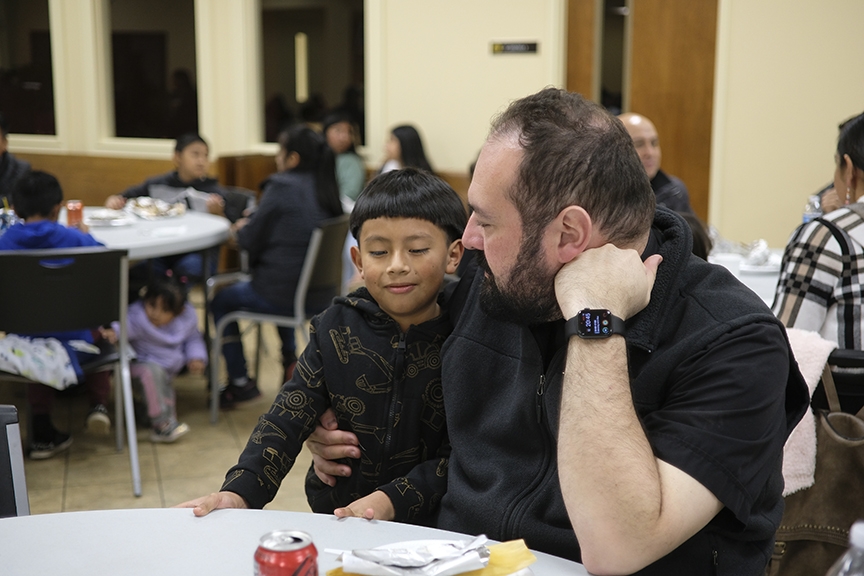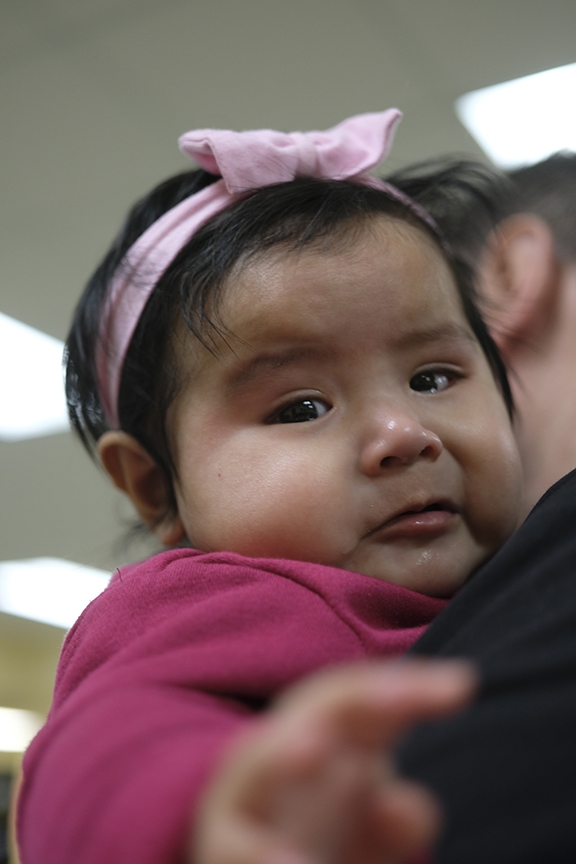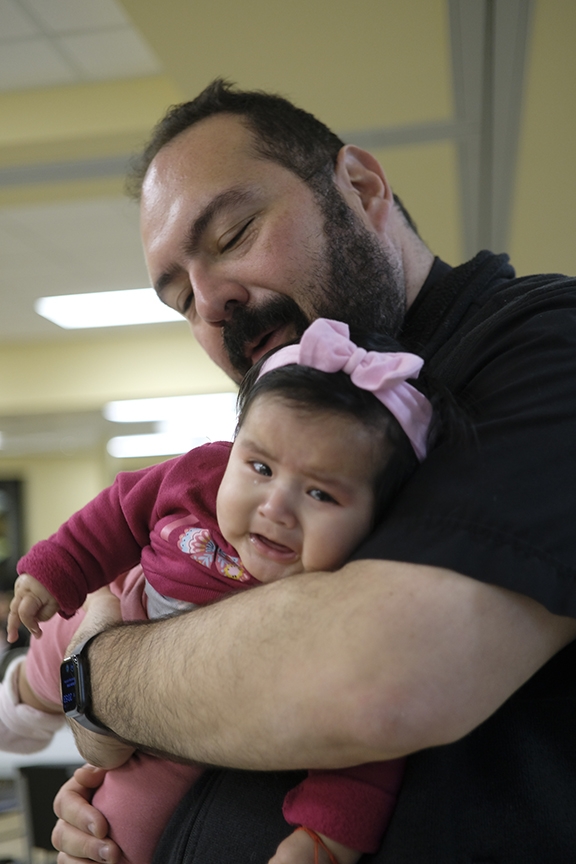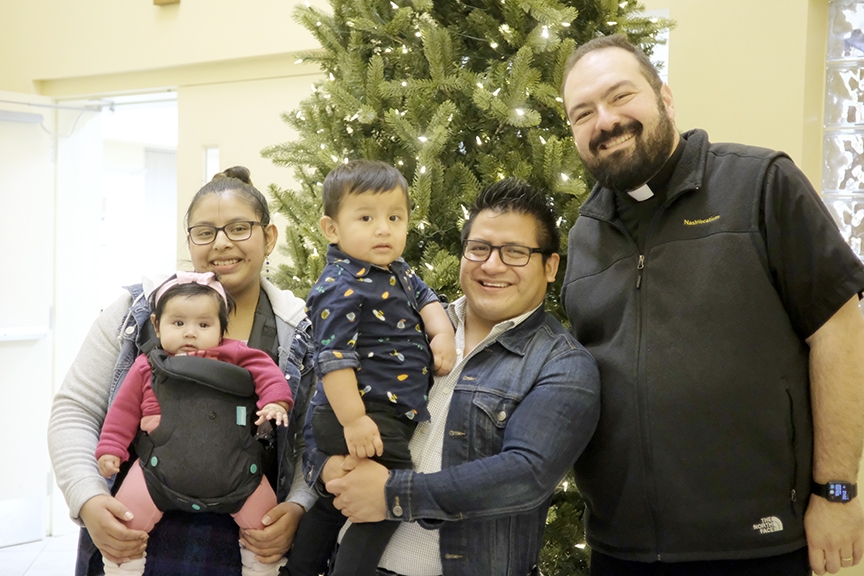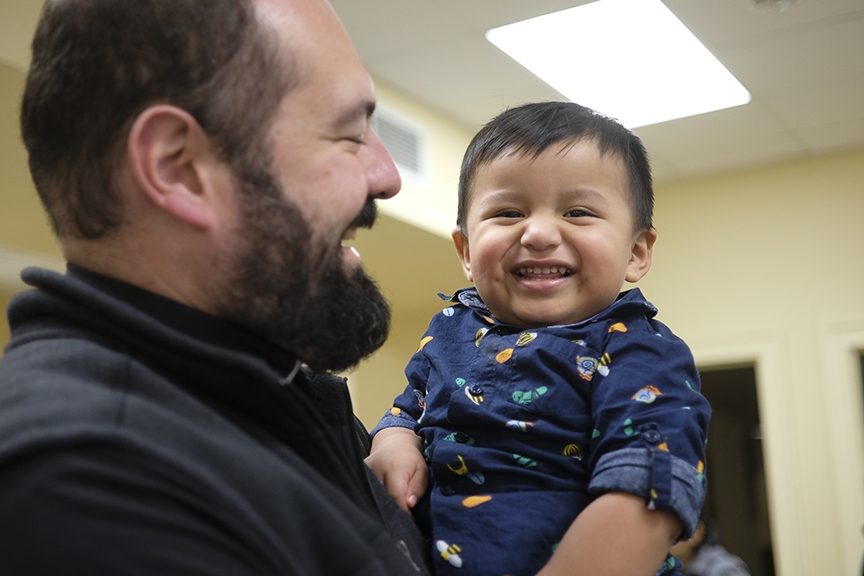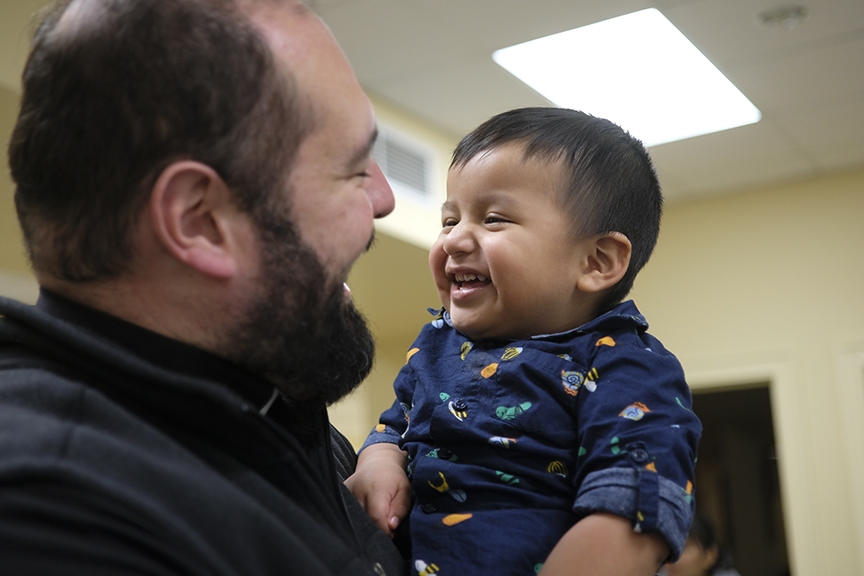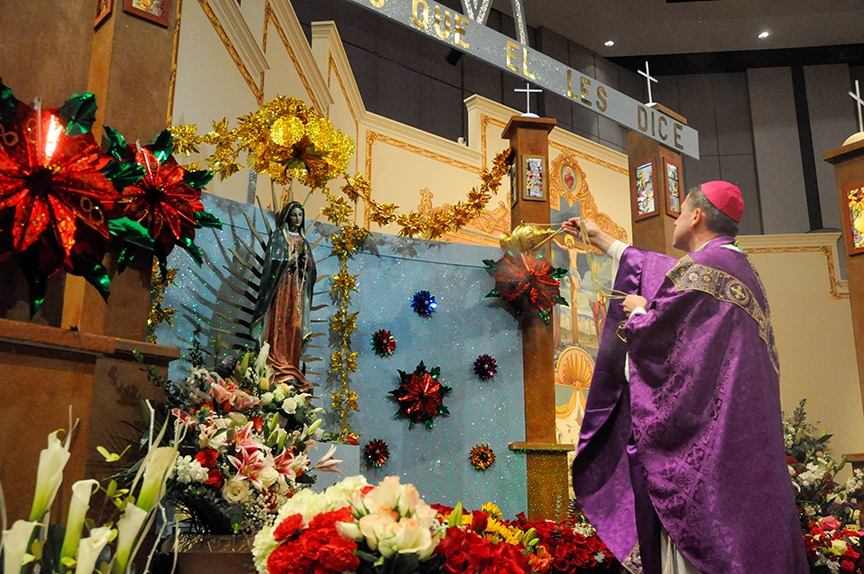
For nearly the last 500 years, the Feast of Our Lady of Guadalupe on Dec. 12 has remained one of the most popular devotions for Catholics.
In 1531, Mary twice appeared to a man named Juan Diego, an Aztec convert to Christianity. She first appeared on Dec. 9, during which she requested a shrine be built on Tepeyac Hill, the very spot she appeared. But the archbishop of what is now Mexico City wanted a sign first. Mary provided that sign to Juan Diego on Dec. 12, when she asked him to collect flowers from the top of the hill in the dead of winter when nothing bloomed. Juan Diego found the flowers, collected them in his tilma (or cloak), and when he dropped them at the archbishop’s feet, an image of Mary was imprinted upon the fabric. That image is the one now venerated in the Basilica of Our Lady of Guadalupe in Mexico City.
Her growing popularity has led to her becoming not just patroness of Mexico and the Americas, but also the patroness of the Diocese of Nashville. Her importance and what she represents has only strengthened through the years, and it’s proven each year in several churches across Middle Tennessee, particularly by those with large Spanish-speaking populations.
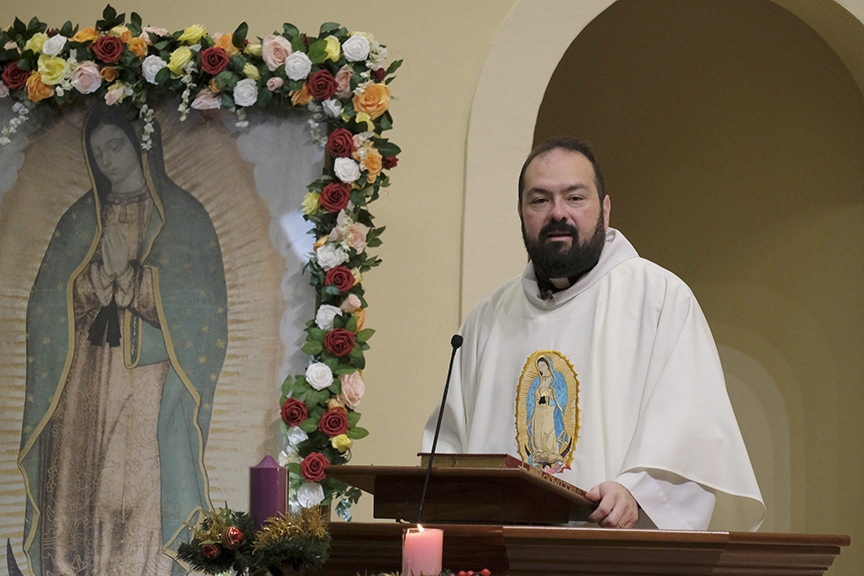
“This feast day is important for uniting as many people from different parts of the world that we can, especially in our diocese with her being our patroness,” said Father Gervan Menezes, pastor of St. Thomas Aquinas Church in Cookeville.
In celebration of the feast day, St. Thomas Aquinas held a nine-day novena from Dec. 3-11 with different communities and groups throughout the parish dividing up the days among them and taking charge of that assigned day. While slightly different each time, every day included praying the prayer of the novena and saying a rosary each night. To end the novena, everyone gathered at the church to sing the Mañanitas from midnight to 1 a.m. Dec. 12.
The celebration ended with Mass and fellowship on Dec. 12. During the homily, Father Menezes asked parishioners to remember three things.
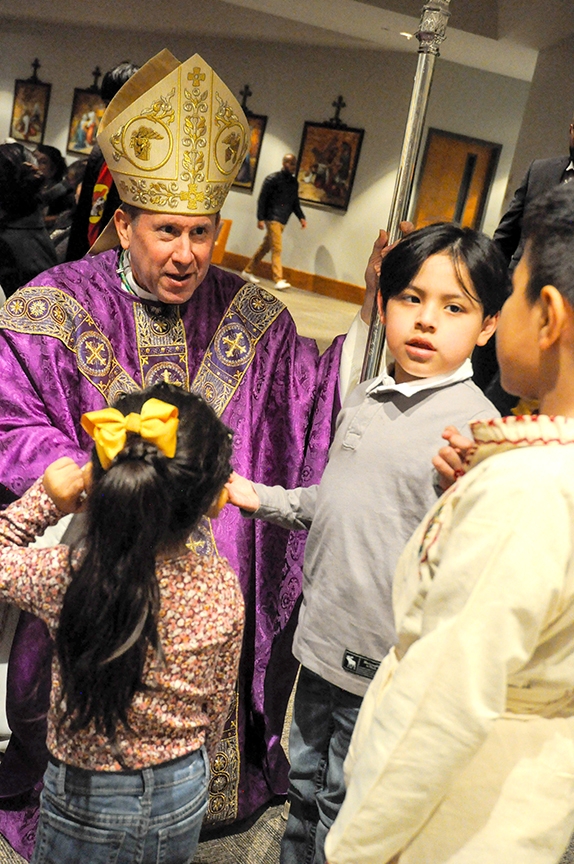
First, Our Lady of Guadalupe is the “Mother of all” since she is patroness of the Americas.
Second, “God uses the small and humble to change the world,” he said, just as he did with St. Juan Diego. “But before we can change the world, we have to change ourselves,” he noted. “So, we must ask ourselves, ‘How can I allow myself to be transformed by God, so I can be the transformation for others?’”
Finally, Father Menezes emphasized the importance of the miracle of Our Lady of Guadalupe.
“Science cannot explain miracles. Miracles are when they take all that they know in science and they come to a point and say, ‘We can’t explain it,’” he said. “We have miracles so we can strengthen our faith. The miracle of Guadalupe was just that – to strengthen the faith of the bishop and all those people who converted to the faith because of it.”
With these points in mind, Father Menezes concluded, saying, “We are invited every day to experience the miracle of the Eucharist,” he said. “If we really are devout to Our Lady of Guadalupe, we must come to Mass every Sunday because she always points us to her son.
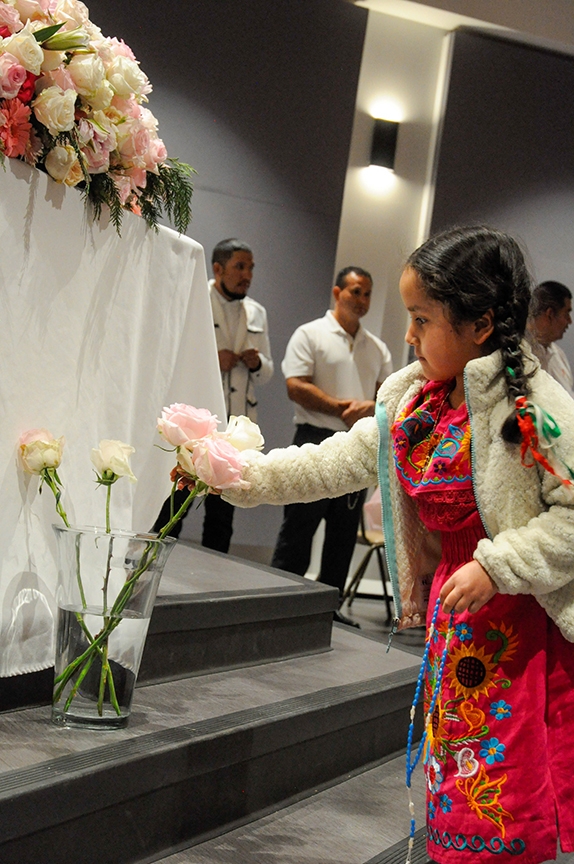
“It’s not just every 365 days, but every day that you’re called to engage in the faith,” Father Menezes said. “And make sure that we always have the understanding that Our Lady always leads us to Jesus.”
At the end of Mass, eight individuals consecrated themselves to Jesus through Mary after completing the 33 Days to Morning Glory do-it-yourself-retreat by Michael E. Gaitley.
Sagrado Corazon Church held two days of festivities Dec. 11-12, which included indigenous dances in traditional costumes, offering flowers to Our Lady, a presentation of the apparition to Juan Diego, Mañanitas, and Masses. Bishop J. Mark Spalding celebrated Mass with the community the evening of Sunday, Dec. 11.
St. Philip the Apostle Church in Franklin also hosted two days of festivities Dec. 11-12. Celebrations included musical offerings to Our Lady, living rosaries, traditional Aztec dances from three different dance companies, a Mariachi band, Mass and more.
“For the Mexican culture, Our Lady of Guadalupe plays a very important role not only in our faith, but in our identity,” said Father Juan Carlos Garcia, associate pastor of St. Philip. “In her image, we see the image of two cultures coming together. Her appearance reflects that unity.
“Our Lady of Guadalupe allowed the Mexican people to embrace the Gospel of Jesus,” he continued. “In Mary, we recognize that she is not God, but in her womb, she carries God.
“She continues to be recognized and embraced by many cultures in the Americas, regardless of their background,” he concluded. “When Our Lady of Guadalupe appears to them, they recognize her as someone special; they recognize that she is a messenger.
“In everything that we do, we try to highlight that special message that she brought. Every time we come to celebrate Mary, ultimately, we’re celebrating the greatest gift she gives us, which is her son, Jesus Christ.”
